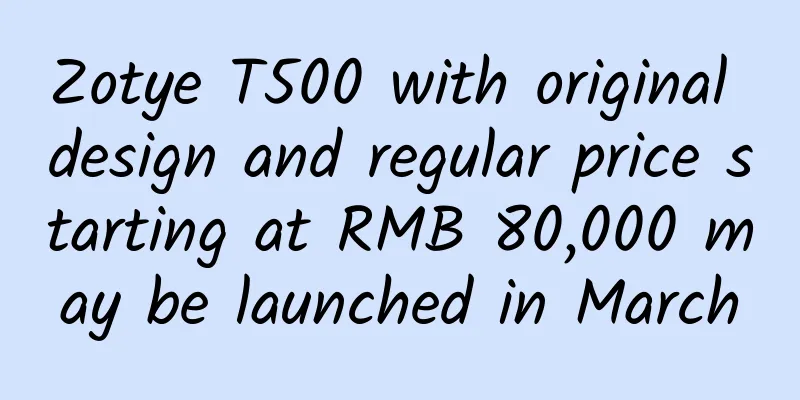Next stop: Uranus! NASA is planning a mission to explore an icy planet. When will it depart?

|
Uranus is the second farthest planet from us in the solar system, ranging from 17.38 to 20.23 AU (astronomical units, 1 AU is about 150 million kilometers). It is an icy world with a surface temperature of only 47 K, or -226 ℃. All the extraterrestrial planets have not been visited by humans, but they have been visited by unmanned probes with human "eyes". In 1986, the Voyager 2 unmanned probe launched by NASA passed by Uranus after more than 8 years of space travel. At its closest point, it was 81,500 kilometers from the top of Uranus' atmosphere. Voyager 2 discovered 10 new satellites and acquired a lot of data about Uranus through photographing and detecting. Since then, no human has visited Uranus. Now, NASA is preparing to restart the Uranus exploration plan. What kind of plan will it be? Let's take a look. Let's first talk about the discovery process of Uranus. In ancient times, people only discovered five extraterrestrial planets, namely Venus, Venus, Mercury, Fire, and Saturn, because these five planets can be seen with the naked eye. Later, humans invented the telescope, which allowed them to see more distant planets. On March 13, 1781, British astronomer Friedrich William Herschel observed the sky with a homemade telescope in the courtyard of his residence and saw a new star that moved. At first he thought it was a comet and reported the discovery to the Royal Society of London. After observation and discussion with other astronomers, they determined that this was not a comet, but a newly discovered planet, one of the main planets in the solar system. As the first discoverer, Herschel was awarded the Copley Medal by the Royal Society of London. King George III of England at that time attached great importance to scientific discoveries and decided to give Herschel a salary of 200 pounds a year and asked him to move to Windsor Castle so that the royal family could use his magical telescope to feast their eyes. At that time, 200 pounds was equivalent to 24,000 pounds in 2019, which is about 200,000 yuan at the current exchange rate. Herschel was very moved by this. When people asked him for his opinion on naming Uranus, he did not hesitate to give it the name "George III" to thank King George III for sponsoring his career. After several changes, Uranus was finally named after Uranus, the god of the sky in Greek mythology, and Uranus is the Chinese name for Uranus. Basic Information about Uranus Apart from some blurry photos obtained through telescope observation, humans have only one probe that has been near Uranus, Voyager 2. When it was closest to Uranus on January 24, 1986, it was only 81,500 kilometers away, less than a quarter of the distance between us and the moon, so it obtained a lot of precious information about Uranus. According to comprehensive analysis of various data, Uranus is a giant gas planet with a diameter of 55,742 kilometers, a volume of about 64 times that of the Earth, and a mass of about 14.5 times that of the Earth. Its main structure is about three layers: the core is a rocky core with a radius of about 20% of the radius of Uranus and a mass of only 0.55 times that of the Earth; outside the rocky core is an ice mantle, which is a dense high-temperature fluid composed of water, ammonia, and methane ice under high pressure, with a thickness of about 30,000 kilometers; above the ice mantle is the atmosphere of Uranus, which is mainly composed of 83% hydrogen and 15% helium, as well as 2% methane and trace amounts of other gases, with a surface temperature of about -215 ℃. Voyager 2 also discovered that the wind speed on Uranus reaches 161 kilometers per hour, which is equivalent to a 15-level typhoon on Earth, and is in the same direction as its rotation; the direction of Uranus' magnetic axis is also different from that of other planets. Uranus' rotation period is 17.4 hours, and its revolution period is 84.0205 Earth years. Voyager 2 also discovered 10 new satellites of Uranus, bringing the total number of Uranus' satellites to 27. The largest satellite, Titania, has a diameter of 1,576.8 kilometers, about 45% of the moon. Some satellites have very strange geological structures and intense geological activities. Uranus also has a dim ring system composed of dark granular material with a diameter of about 10 meters. This is the second planetary ring discovered in the solar system after Saturn's ring. Voyager 2 discovered 2 new rings on the basis of the original 9 rings. It is now discovered that this ring is composed of 13 named small rings, of which only the ε ring is the brightest, and the rest are very dim. In fact, these are just the surface of Uranus. The internal situation is only theoretical modeling, and the real situation at a deeper level of Uranus is still very pale based on some known data. The launch of a dedicated Uranus exploration program has ignited scientists' new interest in Uranus because, among the more than 5,000 known exoplanets found so far, the most common are planets the size of Uranus. Therefore, if the secrets of Uranus can be uncovered, we will be able to learn more about planets orbiting other stars. The National Academies of Sciences, Engineering, and Medicine of the U.S. released a report on April 19 that planned space exploration goals from 2022 to 2032. The report proposed two major missions, namely, launching a probe to Uranus in the early 2030s and launching a probe to Enceladus in the late 1930s or early 1940s. The report was issued based on 527 white papers submitted by planetary scientists from all over the United States and two years of discussion and demonstration by 97 experts, so it can be regarded as a feasibility plan. Amy Simon, a scientist at NASA's Goddard Space Flight Center who participated in the report, said: This mission will be absolutely revolutionary. The exploration mission of Uranus is to understand Uranus, find out what drives the strong winds blowing through Uranus' atmosphere, the internal structure of Uranus and the reasons for the magnetic field fluctuations, the planetary rings and some satellites. Because the planets are all orbiting the sun at different speeds, if you want to get closer and faster to a planet, you must wait for the best opportunity, which is called the window period. The window period for Uranus is between 2031 and 2034, and launching during this period can save the most time and fuel. Therefore, if the mission is really launched, the Uranus probe will be launched as early as 2031, and the launch vehicle may use the already mature Falcon Heavy rocket. Waiting and anticipation To fly to such a long distance as Uranus, it is not enough to rely solely on the rocket or the probe itself to carry fuel to accelerate. It is also necessary to use the gravitational slingshot effect of the planets along the way to speed up. Otherwise, it will be pulled slower and slower by the gravity of the sun, and reaching the target will be a long way off. Therefore, the probe sent to Uranus will use the huge gravitational slingshot effect of Venus and Jupiter, which requires that the two planets are exactly in the way of the probe. In this way, the specific launch time is even more important. According to NASA's current planning path, it will be launched from Earth in 2031, will pass Venus in 2034, and Jupiter in 2036. After gaining speed, it will go straight to Uranus and will arrive in 2043. Whether this mission can be successfully implemented requires not only the power of science and technology, but also economic strength. The total investment budget for this mission is about 4.2 billion US dollars. Based on the experience of previous astronomical exploration missions, the final actual investment will always exceed the budget by a large margin. For example, the Webb Space Telescope launched not long ago had an initial budget of only 500 million US dollars. After 20 years of design and construction, the budget was continuously increased to more than 10 billion US dollars. Therefore, some people believe that NASA is likely to bring in its old partner, the European Space Agency, to achieve this mission together. Now the world situation is turbulent, whether this mission can be finally achieved remains to be seen. What do you think about this? Welcome to discuss, thank you for reading. The copyright of Space-Time Communication is original. Infringement and plagiarism are unethical behavior. Please understand and cooperate. |
<<: The more I apply a mask, the drier my skin becomes? What’s the problem?
>>: Does it really help to lie down with your eyes closed when you can't sleep?
Recommend
APP Promotion Activities: How to plan a screen-sweeping event?
Wang Zaixing, co-founder of New World, said in an...
For more than 3,000 days and nights, he turned the "beam of dreams" into the "light of reality"
Author: Zhang Shuanghu At 3 a.m. on January 11, 2...
Key insights into product fission promotion and dissemination!
Whether it is an Internet product or a consumer p...
Analyzing the techniques used by internet celebrity brands to become popular!
If we cite the most representative examples of in...
The connection between heaven and earth suddenly lost, how much do you know about emergency troubleshooting methods?
On July 25, power supply problems caused the Unit...
To build a personal brand on Douyin, you need to do these 5 things well!
The author of this article once created a video o...
Kuaishou Live Streaming Getting Started Guide
We often say that traffic is money, so how do we ...
iOS source code download: Implementing custom drawing functions
Supported platforms: iOS Operating environment: i...
How to operate well? The COO's job is like building the engine of the company
1. The COO’s job is like building the engine of t...
Information flow promotion, analysis of 7 excellent case techniques!
For third-party optimizers, advertising placement...
Jiang Shuying asked what Aquaman was, so what did Aquaman mean? Do you know Aquaman?
The TV series "Nothing But Thirty" star...
Dear advertiser, what misunderstanding do you have about advertising creativity?
A few days ago, a colleague sent me an App screen...
10 eye-catching changes in Windows 10 Build 15007: Game mode is on full blast
Entering the Year of the Rooster, Microsoft seems...
As the mobile trend accelerates, show entertainment will become a 10 billion market in 2016
The 2016 China Show Entertainment Market Research...









